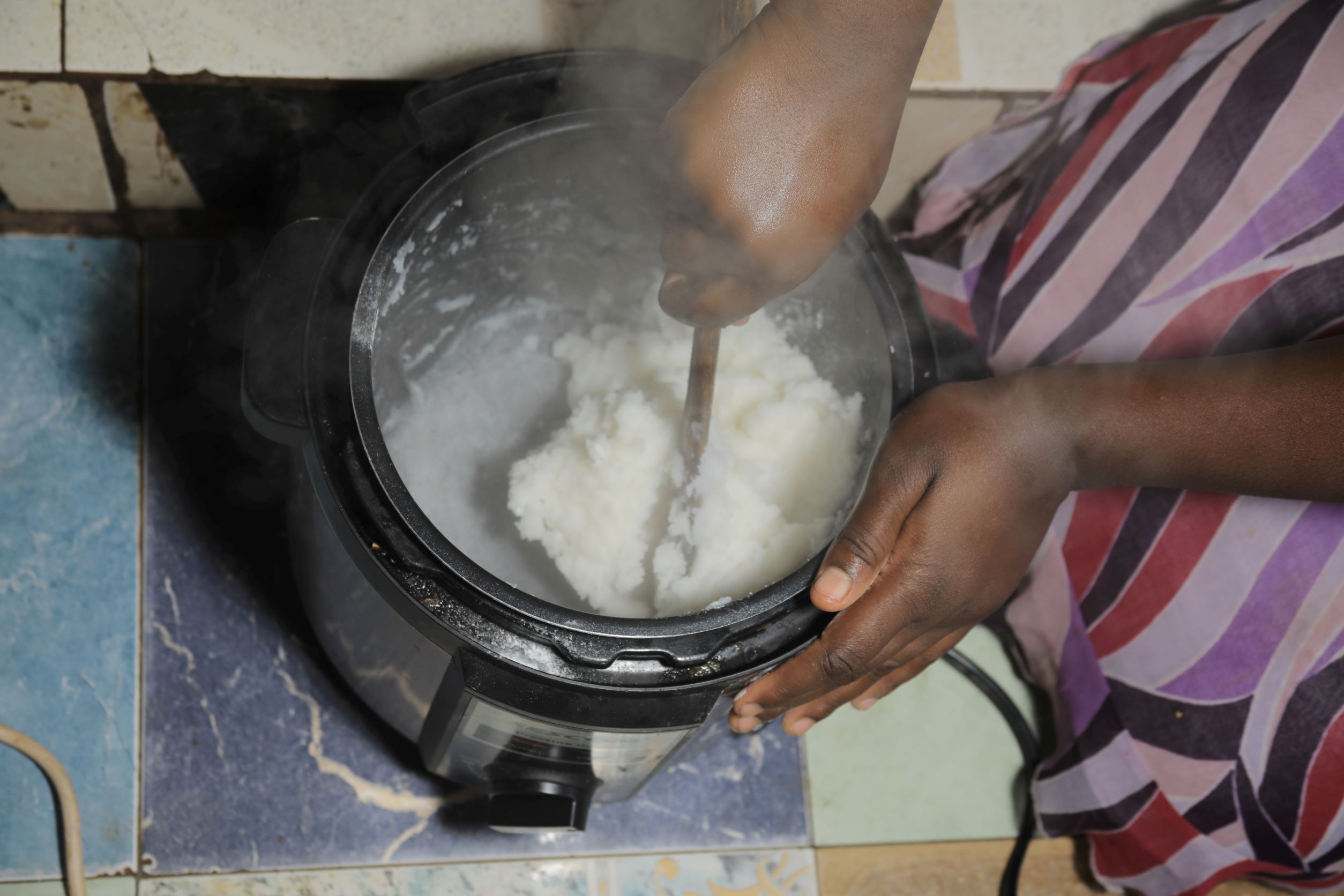
- Date
- 21st December 2022
- Categories
By Dr Nigel Scott (Gamos Ltd.; Loughborough University)
How do you show that cooking with electricity is cost-effective? One of the approaches adopted by the MECS programme is controlled cooking tests (or kitchen laboratory tests), which have generated the data used to create a number of cookbooks and country specific reports (e.g. Zambia, Ethiopia). In these tests, we have chosen a handful of commonly cooked dishes that represent the typical menu of the country. Precisely defined recipes have then been cooked multiple times using each of the different fuels under consideration. In this way, we have been able to compare the amount of energy used to cook given dishes using different fuels and, thereby, to compare the costs. The controlled cooking tests are based on earlier work by Rob Bailis that recognised the limitations of tests designed to measure cooking stove efficiency and sought to make comparisons based on “a standard cooking task that is closer to the actual cooking that local people do every day”.[1]
This protocol emphasises the importance of standardising the dish to be cooked and the method of preparation in order to make results as consistent as possible. In particular, it recommends coming up with an objective description of when the cooking process is completed. It also emphasises that cooks should be familiar with the stove being tested. However, a number of practical issues have arisen when carrying out controlled cooking tests using modern cooking fuels and technologies.
The idea of using a precise recipe and ensuring that cooks are familiar with the stove is to minimise any variation due to the skill of the cook. This can be difficult to achieve when testing innovative fuels and technologies. It’s not such a problem for electric pressure cookers (EPCs) because, for a given recipe, there is little need for skill – you put the lid on, press the button and walk away. The same can be said for other modern devices with microprocessor-controlled automation (e.g. rice cookers). Induction hobs, on the other hand, are an example of a technology that will be unfamiliar to many cooks, and takes quite a bit of getting used to, even if training explains the principles of operation.
We agree that the same cook should be asked to cook the dish using the different devices in order to minimise variation due to individual cooking practices, but it is not possible to find cooks who are equally familiar with all of the technologies being tested. For example, cooks who use charcoal may be adept at controlling a charcoal stove but have no idea how to use an induction hob and, conversely, somebody who usually cooks with LPG or electric induction may be out of practice with how to light and control a charcoal stove. When considering the ways in which the skill of the cook can affect results, we propose that cooking practices are determined to a certain extent by the motivation(s) of the cook:
- Time: if people want to cook as quickly as possible, they are likely to use the cooking device at maximum power, which is likely to lead to relatively high energy consumption;
- Cost: if people want to minimise fuel use, they are likely to control the power output of the cooking device as carefully as they can, which is likely to lead to lower energy consumption;
- Product: all cooks (and husbands) have different preferences on how a dish should taste. While a standard recipe controls for different cooking styles, the consistency of the end product will depend on how long the dish is cooked for. Pasta is a good example – some people like it well cooked, others prefer it ‘al dente’.
To standardise or not to standardise? The more tightly defined a test is, the less variation you should get due to the skill of the cook. However, we recognise that this approach takes the test one step further away from the ‘real world’ experience that we want to understand. On the other hand, giving the cooks more freedom to cook as they would do normally will introduce a range of additional factors. The purpose of this piece is not to pass an opinion on the right way to go, but rather to share our thinking on the kind of things that need to be considered when designing a controlled cooking test.
[1] https://pciaonline.org/files/CCT_Version_2.0_0.pdf
Featured image credit: Centre for Research in Energy and Energy Conservation (CREEC), 2022.